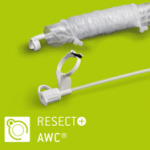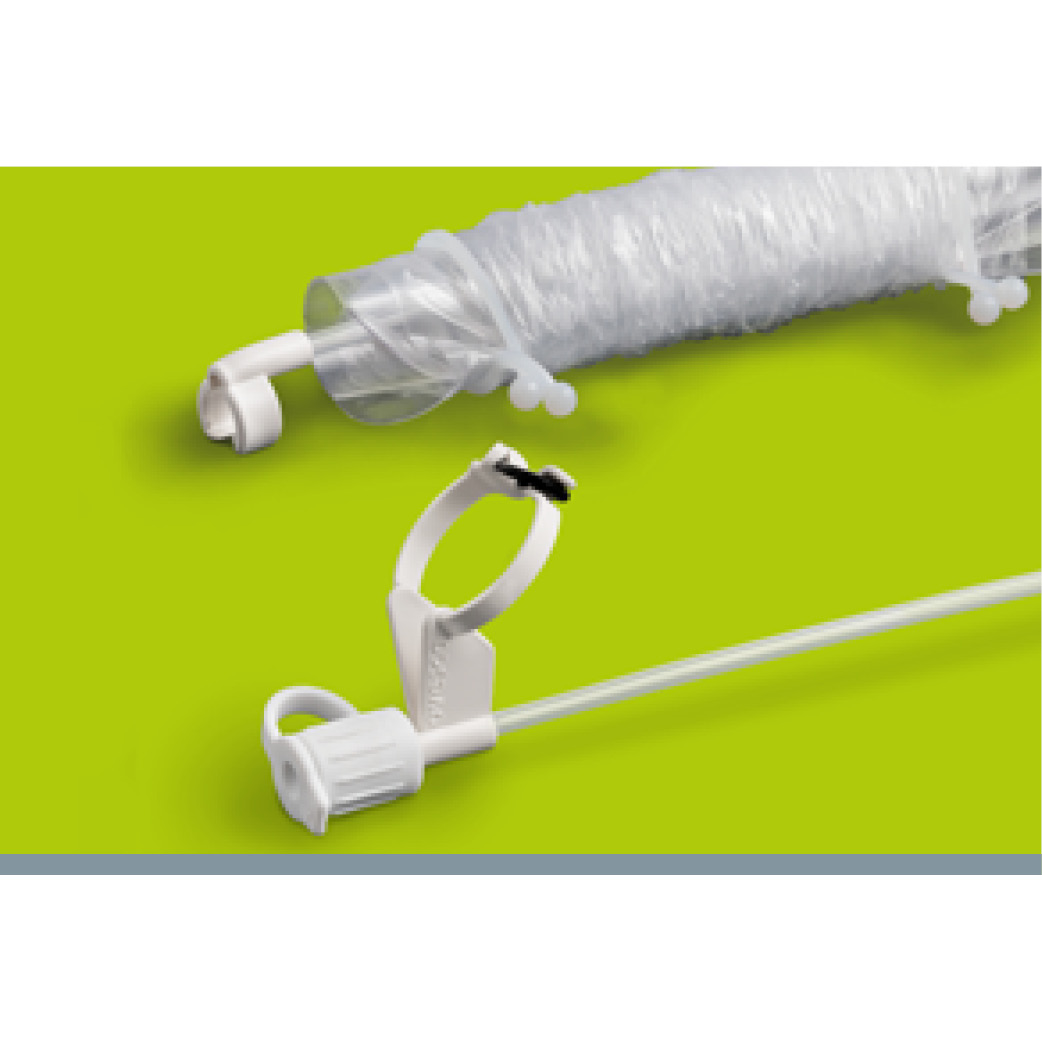AWC® offers an affordable and equivalent alternative to double-channel endoscopes
The additional working channel (AWC) offers an affordable and equivalent alternative to double-channel endoscopes with good applicability in everyday endoscopy practice
A systematic study showed that EMR and ESD with the AWC (EMR+ and ESD+) are equivalent to using a double-channel endoscope (DC). A total of 96 endoscopic procedures were evaluated ex vivo in a well-established pre-clinical porcine model (EASIE-R simulator) with standardized gastric lesions measuring 3 or 4 cm. For 3 cm lesions, EMR+ and ESD+ both demonstrated good outcome with no adverse events and en-bloc resection rates of 73% (EMR+) and 100% (ESD+). Muscularis damages of 20% (EMR+) and 12.5% (ESD+) were seen in 4 cm lesions. All results of EMR+ and ESD+ were comparable to those of EMR and ESD with DC (significance was proven). Resection time was slightly shorter in all groups with the AWC compared to DC (significant only in 3 cm ESD lesions; p<0.05).
In the context of endoscopic mucosal resection (EMR) and endoscopic submucosal dissection (ESD), the use of an external additional working channel (AWC) has led to the development of advanced techniques referred to as “EMR+” and “ESD+.” The aim of the study by Knoop et al. was to systematically compare these novel techniques with standard EMR and ESD, both performed using a double-channel endoscope (DC). For this work, Dr Knoop (Universitätsmedizin Göttingen) was awarded the Endoscopy Research Prize at this year’s DGVS.
The prospective trial was conducted using a pre-clinical porcine animal model (EASIE-R simulator) with standardized gastric lesions measuring 3 or 4 cm in size. The primary endpoint was the rate of en-bloc resection (defined as complete resection with all previously marked coagulation points within the resected specimen). Secondary endpoints were procedure time (defined as from submucosal injection of the lesion to complete resection) and adverse events (muscularis damage, perforation).
A total of 96 endoscopic procedures were performed in 11 porcine stomachs (each with 6-9 lesions). For 3 cm lesions, both EMR+ and EMR with DC demonstrated favorable outcomes, with no adverse events reported and en-bloc resection rates of 73.33% (11/15) for EMR+ and 60.00% (9/15) for EMR with DC (p=0.70). These techniques were limited when dealing with 4 cm lesions, resulting in muscularis damage of 20.00% (3/15) for EMR+ and 13.33% (2/15) for EMR with DC (p≥0.99). En-bloc resection rates decreased to 60.00% (9/15) for EMR+ and 46.67% (7/15) for EMR with DC (p=0.72). ESD+ and ESD with DC showed reliability in all groups, achieving en-bloc resection rates of 100% (36/36) and reporting no adverse events in 3 cm lesions. For 4 cm lesions, both ESD+ and ESD with DC showed a 12.50% (1/8) incidence of muscularis damage. Mean procedure times were slightly shorter when using the AWC compared to DC in all groups, with statistical significance observed only in 3 cm ESD lesions (p<0.05).
The external additional working channel (AWC) provides a cost-effective alternative to a double-channel endoscope, effectively converting a standard endoscope into a double-channel instrument. The study by Knoop et al. shows that EMR+ and ESD+ techniques are equivalent to standard EMR and ESD when performed with a double-channel endoscope. As a result, the AWC can be considered a viable and affordable option for both EMR and ESD procedures.
Knoop RF, Amanzada A, Petzold G, Ellenrieder V, Engelhardt M, Neesse A, Bremer SCB, Kunsch S. Endoscopic mucosal resection and endoscopic submucosal dissection with an external additional working channel (EMR+ and ESD+) are equivalent to using a double-channel endoscope: a systematic evaluation in a porcine ex vivo model. Surg Endosc. 2023 Aug 11. doi: 10.1007/s00464-023-10295-4.

|
 |


 Deutsch
Deutsch  Français
Français 